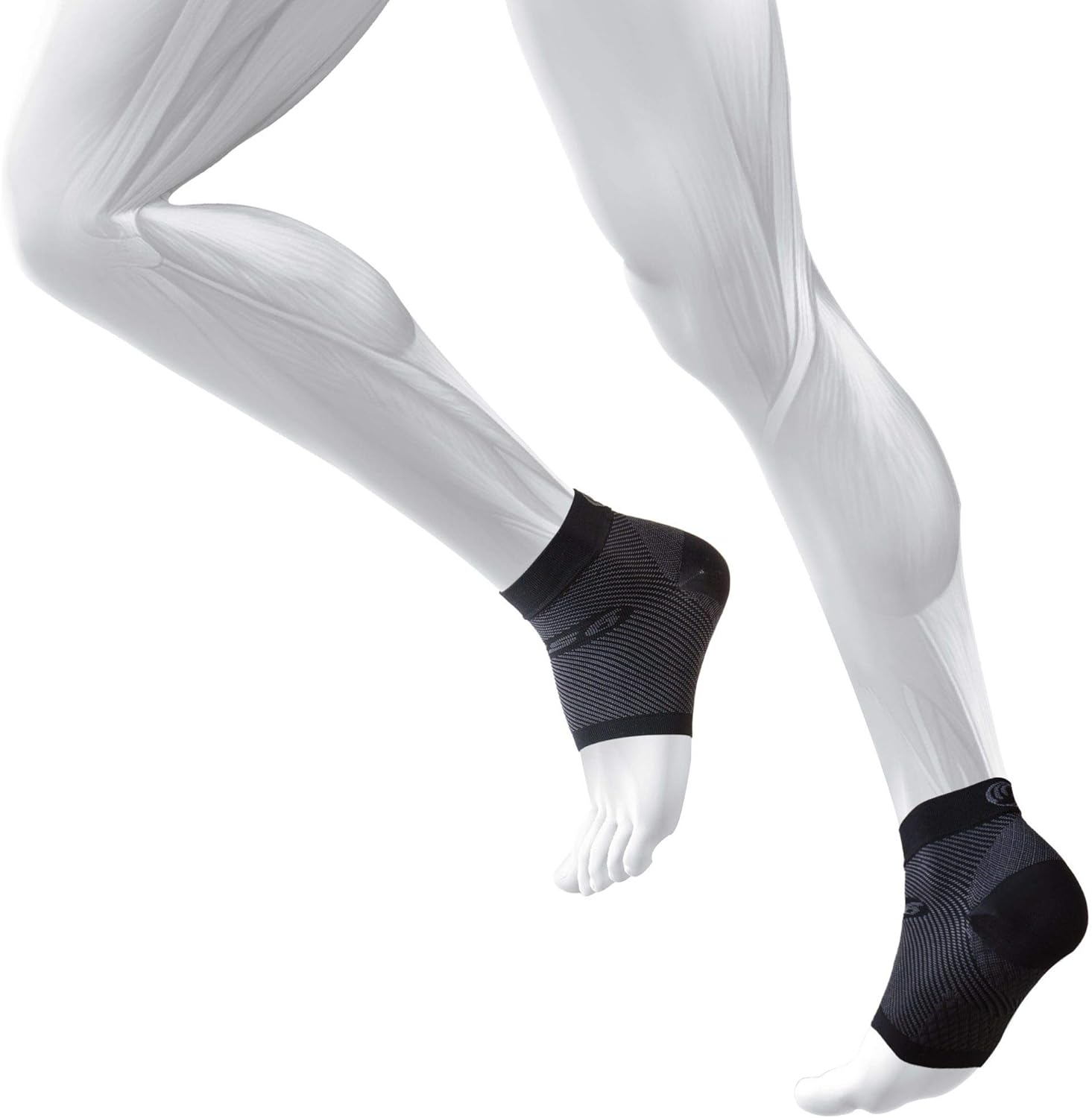Cushioning every step, plantar fasciitis socks offer a path to relief and comfort, one stride at a time
Do plantar fasciitis socks work? A question that has got many of us thinking tirelessly. They say excess of everything is bad and I’m also starting to dislike the bunch of ecommerce digitization. Type plantar fasciitis in the search query and boom, lots of options appear right on our screens. Each claiming to treat our feet perfectly.
But the question here is, Do you understand your condition? Because the treatment of every disease is hidden in what’s causing it. That’s why we first need to educate ourselves.
In this article, we will be studying Plantar Fasciitis, its causes, and treatment methods and also find the best socks to help treat the pain and get back to normal life.
What is Plantar Fasciitis?
Plantar Fasciitis ( PLAN-tur fas-e-i-tis) is one of the most hurtful types of foot pain. People commonly use the term to describe stabbing-like pain in the heel, which makes it difficult for a person to walk.
The word plantar fasciitis comes from the planta-fascia, a triangular-shaped collagen ligament in the feet that connects the heel with the front of the foot and supports the foot arch. Ten percent of the US population commonly experiences it, and it affects both active and sedentary adults (a term defining people who spend more time sitting) adults.
The National Library of Medicine 1 defines its role as “ The Plantar fascia utilizes its tensile strength in preventing the collapse of the arch of the foot upon vertical load transmission from the weight of the body”
The fascia also acts as a shock absorber, however when excess pressure is put upon it, usually due to excessive running or putting up more weight, the ligament tears which cause unbearable pain in the feet referred to as Plantar Fasciitis.
What causes Plantar Fasciitis?
There is no significant cause of Plantar Fasciitis, but some factors are said to contribute to the condition.
In an article published by the “American Family Physician”2 Magazine, the researchers conclude the condition to be more common in people who are obese and spend more time on their feet either standing/walking/running or those who have limited ankle flexion. All of the conditions are believed to cause overload stress or chronic injury to the plantar fascia
Plantar Fasciitis Treatment Methods:
There are various treatment methods for Plantar Fasciitis depending upon its cause. However, John Orchard, a sports physician in his clinical review3 summary says
- It is a condition which resolves over time
- Not all treatments have the highest level of treatment evidence. However, moderate levels suggest that stretching, orthotics, shock wave therapy, and injections are good treatment options.
- The patients should not ignore the pain and let it reach prolonged immobility, as it can be severe.
- Lastly, the choice of treatment depends upon the patient response and likelihood.
Do Plantar Fasciitis socks work? Coming to the point where it all started.
Plantar Fasciitis has affected millions of individuals worldwide. The sharp, stabbing pain in the heel has turned into a nightmare for many who feel it during their first steps in the morning or after periods of inactivity
However, we are all lucky enough to live in the 20th century fast-paced and modern world, and looks like science has been utilizing modernity quite well. Fortunately, there are an array of treatment methods available for reducing and diminishing the pain and one of the most popular among them seems to be socks.
Yes, Plantar Fasciitis socks work, and Here’s how,
“ They are also known as compression socks or sleeves, and they are designed to provide heel support, reduce fascia inflammation by stabilizing the feet, and offer targeted support to the arch of the foot“
Their working results from compression, arch support, stabilization, and improved blood circulation features embedded in them.
1. The Compression Feature:
Graduated compression in the socks provides pressure at the specific areas usually the foot and ankle to keep it intact. The compression quality of the socks decreases as it move up to the leg.
If you are interested in knowing more about compression socks and their working, You can Learn here.
The graduated pressure at the ankle and foot improves circulation which in turn reduces inflammation and promotes healing.
Additionally, plantar fasciitis socks also help in reducing swelling by applying pressure on the tissues.
Remember, inflammation of the fascia is one of the main causes of plantar fasciitis pain.
2. Arch Support Feature:
In simple words, Arch support in socks functions to balance the body weight put upon the feet. Recalling the above paragraphs when we were discussing the causes, obesity, and body weight on feet were some of the main causes behind the painful plantar fasciitis condition.
We have compiled some best socks with arch support that combat painful problems. Learn more
3. Stabilization feature:
Stabilization in socks helps protect excessive movement and keep feet in place which helps aid the healing process. It also protects the fascia from encountering strain upon running or walking.
Best Plantar Fasciitis socks

OS1st Plantar Fasciitis Foot Sleeve:
- Light-weight
- Targets, treats, and helps prevent Plantar Fasciitis
- Provides additional arch support
- Medical Grade Compression
Frequently Asked Questions:
Are plantar fasciitis socks effective in treating the condition?
Plantar fasciitis socks can be effective in managing and alleviating symptoms. However, their effectiveness may vary from person to person. It’s essential to consult with a healthcare professional for a comprehensive treatment plan.
Can I wear plantar fasciitis socks all day?
It’s generally safe to wear these socks throughout the day, but it’s essential to follow the manufacturer’s recommendations and consult with a healthcare provider if you have any concerns about wearing them for extended periods.
Do I need a prescription to buy plantar fasciitis socks?
No, you typically do not need a prescription to purchase plantar fasciitis socks. They are often available over the counter at pharmacies, online retailers, and specialty stores.
Are plantar fasciitis socks suitable for running or sports activities?
Some plantar fasciitis socks are designed specifically for sports and physical activities, providing additional support and comfort during such endeavors. Be sure to look for socks that are suitable for your intended use.
Can plantar fasciitis socks be worn with regular shoes?
Yes, most plantar fasciitis socks are designed to be worn with regular shoes. They are often thin and discreet, making them suitable for everyday use.
How do I choose the right pair of plantar fasciitis socks?
When selecting plantar fasciitis socks, consider factors such as the level of compression, size, and material. It’s a good idea to consult with a healthcare professional or read customer reviews for recommendations.
Are there any side effects associated with wearing plantar fasciitis socks?
Generally, there are no significant side effects. However, it’s essential to ensure they fit properly and do not cause discomfort. If you experience any adverse reactions, discontinue use and consult a healthcare provider.
Can plantar fasciitis socks be used as a sole treatment for plantar fasciitis?
While plantar fasciitis socks can provide relief, they are often part of a broader treatment plan. Consult with a healthcare professional to determine the most effective combination of treatments for your specific condition.
Conclusion:
Plantar fasciitis pain is indeed unbearable. It restricts you from completing daily chores and you feel like you would never get up. Fortunately, there are many ways to deal with this problem. Plantar Fasciitis socks prove to be one of the easy approaches to decrease the pain and continue to live like there is no discomfort.
Overall, users find Plantar fasciitis socks helpful in providing pain relief, improving blood circulation, reducing inflammation, and keeping the foot in place
References:
MLR & DOP:
PF-000012 March 2024




